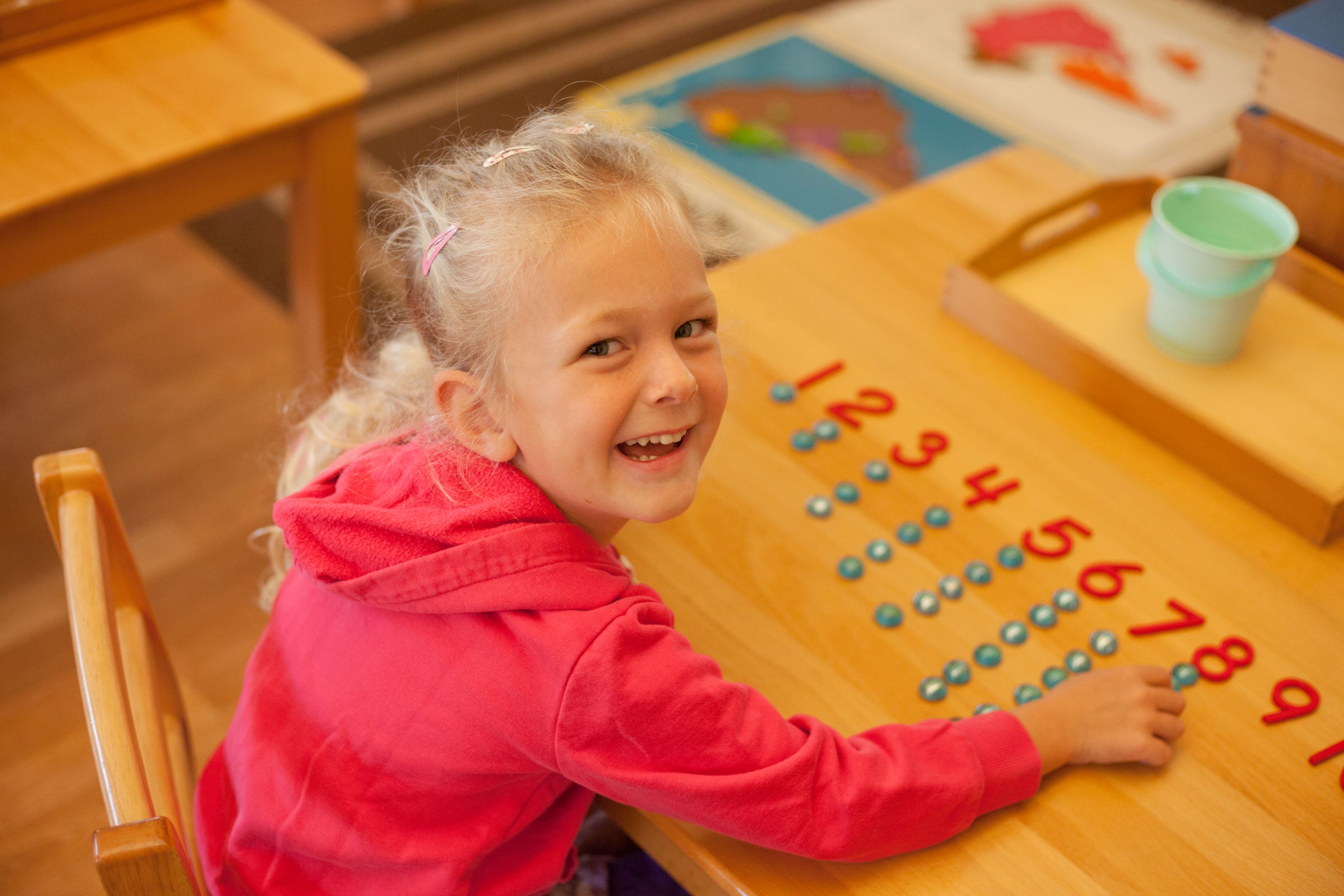Primary Program
Primary Program – (Ages 3 years through 6 years)
The Montessori Primary classroom is often called the “Children’s House” as it is prepared as a comfortable home-like setting designed specifically to meet the needs of the young child. As Dr. Montessori observed, young children’s learning is almost effortless as they explore, manipulate and internalize their environment. Respectful of the unique individuality of all children, the environment encourages a natural progression through different sensitive periods, or times when children are most ready to learn particular skills.
Critical to these ideals are specific components inherent in the primary environments-
1) Respect for the Child as a unique, capable, and independent being
2) Freedom of Choice to select work independently
3) Order and Structure reflective of children’s innate needs and tendency toward logical progression
4) Reality and Nature to ground the children in truthfulness and to enable them to observe, connect with and nurture the natural world
5) Aesthetics and Beauty in order to calm and capture the interest of children
6) Montessori Materials that are attractive, age and developmentally appropriate, self-correcting and providing of both a direct and indirect aim as well as a sequence from the concrete to the abstract.
Orienting children to their time, place and culture is a primary goal. Within the Montessori framework, our orderly, beautiful and dynamic communities are organized into five integrated curriculum areas where the children engage: Practical Life, Sensorial, Language, Mathematics and Cultural, including science and geography. Hawaiian culture is revered, embraced and integrated throughout the curriculum. Music and art are included as part of the Practical Life curriculum on a daily basis as is access to our Living Classroom. Spanish Language exposure, guided by our native speaking Spanish teacher, is offered on a weekly basis. Like inside, the outdoor spaces adjacent to the classrooms are prepared for purposeful work that includes raking leaves, dry or wet sensory exploration, bird watching or washing napkins, among many other choices. Our indoor and outdoor prepared environments provide much opportunity for both fine and gross motor development and flow within orderly guidelines.
Undoubtedly, the biggest benefit of the Montessori Method of Education is the development of peaceful, cooperative, and respectful communities. The multi-age setting benefits all children in that older children model appropriate behavior and empathy for younger ones. The younger children benefit by observing the leadership and learning choices of the older children and aspire to follow their lead. In our dynamic little communities, children learn to treat others as they would like to be treated, to respect all living and non-living things, to care for their environments, and to resolve conflicts using words rather than actions. This is Peace Education in action.

.jpg)

